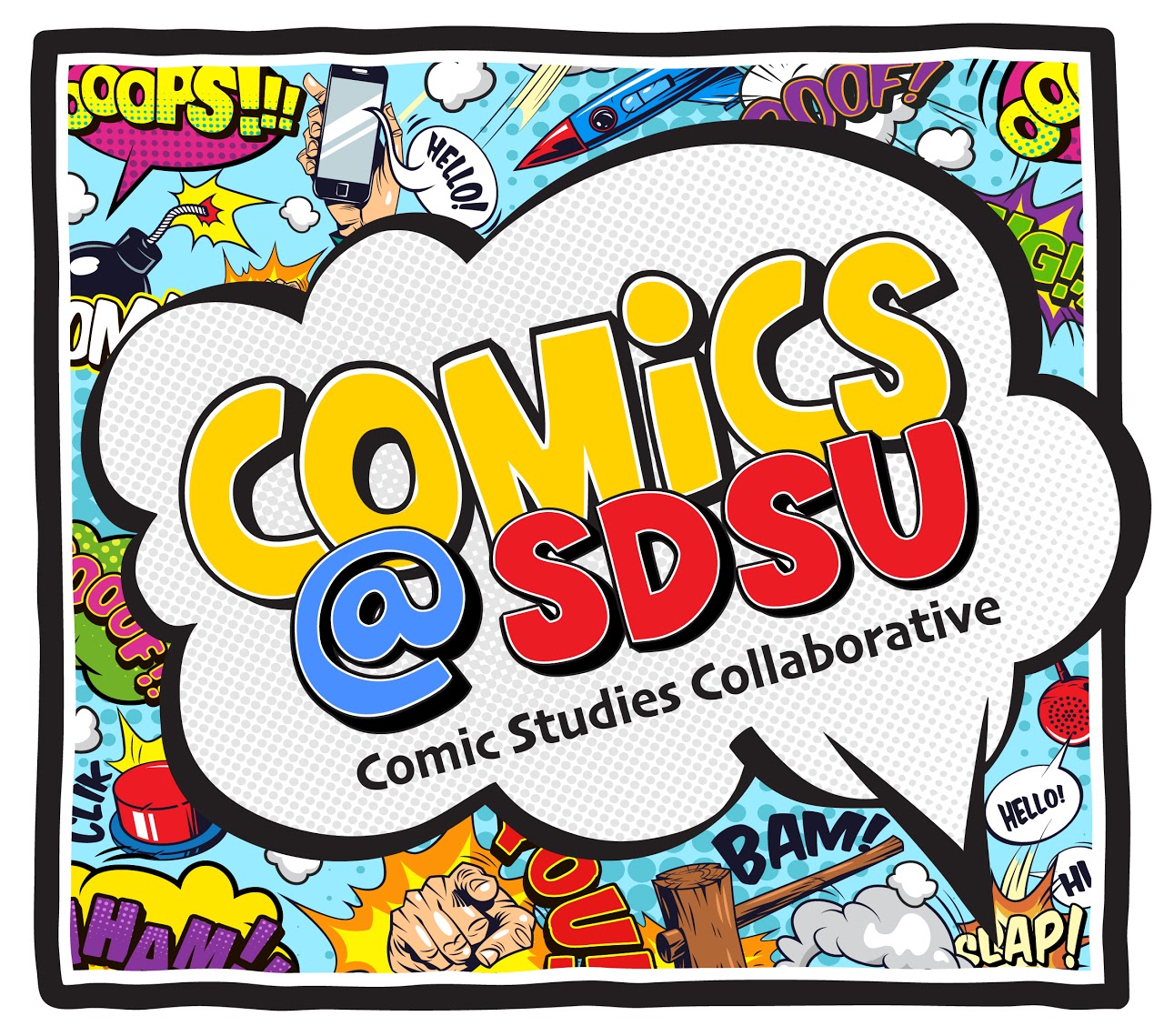Written by
Kishauana Soljour
San Diego State University
While living in Paris, I became an avid comic book collector. I stumbled upon a small comic book store close to my favorite cafe and felt instantly transported. Lifesize figurines of Iron Man and Thor guarded the doors. Old and new comic books lined the walls. People of all ages sat and stood engrossed in tales that took them to far away galaxies. Over time, the store became a cure for my homesickness. I found comfort in reliving memories from my youth.
As my collection grew, I knew I wanted to incorporate comic books into my pedagogy. The first opportunity came last spring when I taught the course HUM 103: Introduction to Public Humanities. During our week themed, “Public Humanities and Pop Culture,” students were introduced to the Golden Age of Comics in American Popular Culture and we welcomed Comics Arts Curator and Co-Founder/Co-Director of the Center for Comics Studies Pam Jackson as a guest lecturer. Focusing our attention on the role of comics during World War II, students selected comics from the SDSU library and wrote blog posts analyzing the impact of nationalism and propaganda. The overwhelming majority of the students enjoyed the assignment and asked for more opportunities to engage the content, themes and stories of comic books.
In conversation with a colleague, Dr. April Anson and I realized that comic books could be a powerful teaching tool in introducing students to Environmental Humanities. Using the Anti-Creep Climate Initiative’s Against the Ecofascist Creep, students in the HUM 103 course revisited many of the super villain Thanos’ iconic quotes and used discussion boards to debate solutions to climate change, border control and limited food supply. These early conversations helped frame my thinking as I created the new course, “Avenging the Universe: An Introduction to Environmental Humanities & Comics.” The class combines foundational readings related to evolutions within the interdisciplinary field of Environmental Humanities and its representation in comic books. Moving beyond the Golden Age, students will engage texts from the Bronze and Modern Age of Comics eras, when various characters were reintroduced or their character arcs were revised to respond to developments within the Environmental Movement. These superheroes and villains engage directly with notions of human progress, human-nature relationships, and environmental change.
Throughout the process of developing the course, I wanted to highlight my research interest in anthropomorphism. As a scholar of the modern African Diaspora, anthropomorphism is featured prominently in oral histories and material culture. Folk and tall tales passed down through generations and across Africa, Europe and the Americas detail animals with human characteristics. These stories were meant to pass down knowledge and moral lessons for protecting nature and humanity. In African culture, totems connect communities to the environment. The animals are not only a symbol of the chosen people but are fiercely protected from internal and external dangers. Given the historical context of conquest and colonization, African flora and fauna have captured the imagination of the world for centuries.
In my research for the course, I found connections around the globe bridging communities to animal figures and spirits. This reverence for nature transcends geographic borders and time. In an infinite world of possibilities, the world’s resources are finite and rapidly disappearing. Taking a page from “villain” Poison Ivy, “grow only what the soil will stand, grow only what we’ll need.” It is my hope that students that take the course will discover new ways of connecting with the environment and envision possible futures grounded in equity, justice and a duty to protect our dying world.

Kishauna Soljour is an Assistant Professor specializing in Public Humanities and African Diaspora Studies. She was an Andrew W. Mellon Public Humanities Fellow and Visiting Assistant Professor of History at Sarah Lawrence College. Dr. Soljour received her Ph.D. in History from Syracuse University in 2019. Her dissertation, “Beyond the
Banlieue: French Postcolonial Migration & the Politics of a Sub-Saharan Identity,” won
Syracuse’s All University Prize and the Council of Graduate Schools & ProQuest
Distinguished Dissertation Award in Humanities in 2019. Her research concentrates on
the nexus of cultural, political, and social change for Diasporic communities in the
twentieth and twenty-first centuries.
Embracing the mission of public humanities, Dr. Soljour is the Associate Director of the
Public & Oral History Center at SDSU. She has developed a number of initiatives to
expand avenues of access to public and oral history including curated exhibitions, a
digital oral history archive, and podcasts; as well as, partnered with Humanities New
York, the United Nations Volunteer Program and the Yonkers Public Library.
